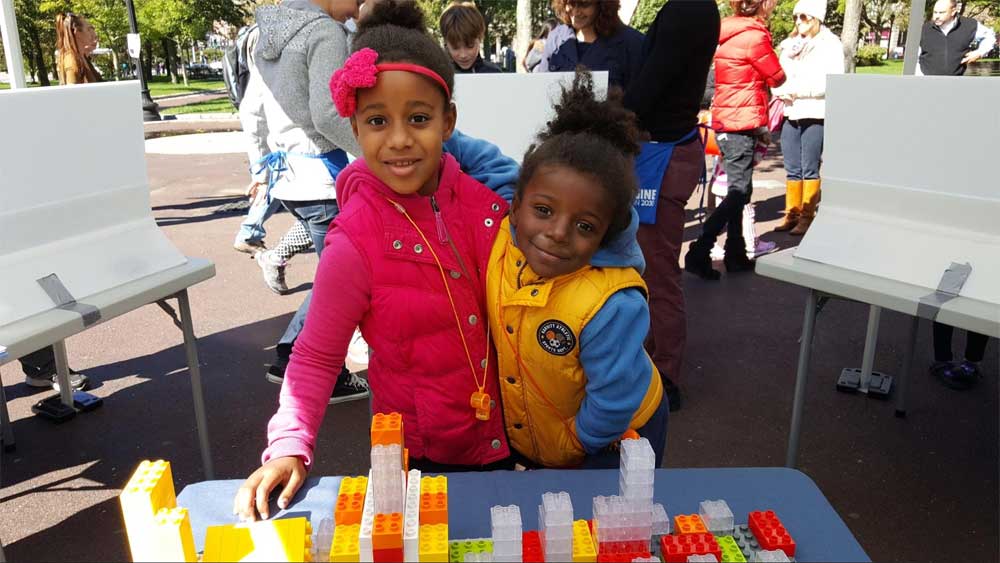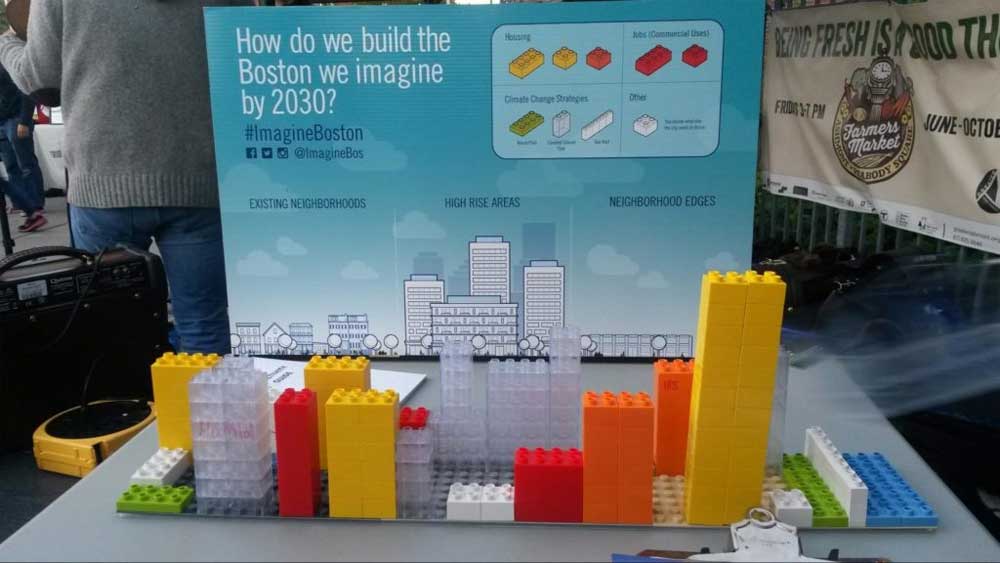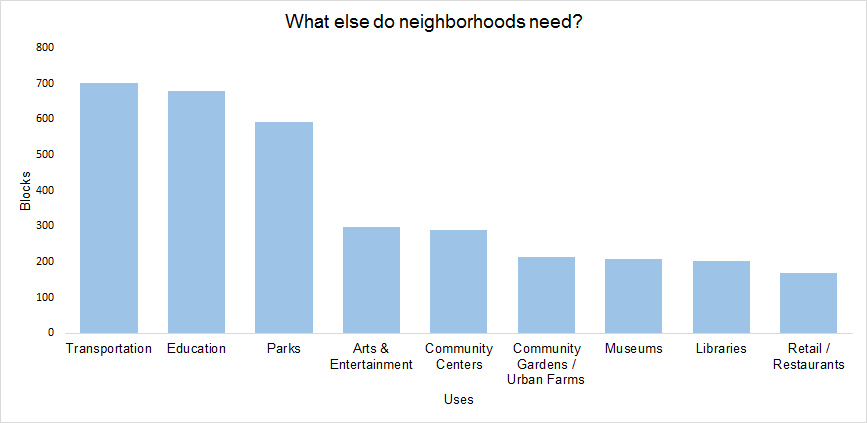Imagine Boston 2030: 1,400 participants joined in imagining growth in the City
Before Imagine Boston 2030 Week in late November, our Engagement Team spent 6 weeks out in full force, gathering input for the first draft of Imagine Boston 2030’s Expanding Opportunity plan.
In total, our Engagement Team attended 52 events across every neighborhood in the city, visiting farmers’ markets, neighborhood meetings, festivals, beer gardens, job fairs, parades, and Girl Scout troop meetings.
We know that Boston needs to grow to accommodate the 53,000 new units of housing, the 68,000 new residents, and the 110,000 new workers who are expected to call Boston home by 2030. We wanted to see where Bostonians would prioritize this growth. So what did we hear from residents?
At each event, participants started with a board that represented three kinds of places in Boston: existing neighborhoods, high rise areas like Downtown and the Seaport, and neighborhood edges–those parts of the city that are train yards, warehouses, and vacant land. Participants were tasked with using building blocks to allocate growth across these three areas in a way that reflects their vision for 2030.
First, participants were given a set of building blocks to place in the locations where they wanted to see new housing. Most people chose to add some new housing to all three kinds of places on the board, distributing it fairly evenly across existing neighborhoods (34%), high rise areas (33%), and neighborhood edges (32%). When given the option to add additional housing in order to increase affordability, participants tended to add slightly more into existing neighborhoods than the other two area types. In total, nearly 69,000 housing building blocks were collectively added by 1,400 participants.
For the next part of the activity, we asked participants to choose locations for new job creation. Nearly 18,000 jobs building blocks were added. Participants located jobs in all three types of places and showed only a slight preference for high rise areas. Participants choices reflected that while they see places like Downtown, Longwood, and other high rise neighborhoods remaining important job centers, many also saw a mix of housing and job growth in all areas of the city.
In addition to building new space for jobs and housing, participants responded to climate hazards, such as sea level rise and flooding, that will be exacerbated by climate change. Participants proposed a combination of sea walls, elevated buildings and natural features to protect the city from extreme weather. Natural solutions such as building a marsh were especially popular as they can absorb stormwater while also providing new public open space.
Finally, participants had the opportunity to add up to five blank blocks that could represent anything they wanted– something that a new or existing neighborhood needs, besides jobs and housing. Some of the more adventurous shared their desire for skate parks and sky diving opportunities, while others suggested co-working spaces and animal shelters. Transportation was the most common theme, with ideas ranging from new MBTA and Hubway stations to ferries and bike paths. Education was also a top response, including preschool, K-18 schools, and adult education.
Overall, participants placed about 50% more of their blank blocks in existing neighborhoods than high rise areas or neighborhood edges. When comparing the categories of ideas that those blank blocks represented, the rankings were similar across the three types of places–for example, transportation, education, and parks were the top ideas in all three types of places. One exception is retail and restaurants, which were more concentrated in existing neighborhoods.
We’d like to thank everyone who participated, as well as the amazing members of our Engagement Team. Check out all of the photos from this fall’s events here.
As we work toward finalizing the Imagine Boston 2030 plan this spring, we still want to hear from you! Did you participate in this activity? Share your experience on Twitter, Facebook and Instagram using #ImagineBoston. And as always, don’t forget to sign up for Imagine Boston updates!
Have you had a chance to read the Expanding Opportunity draft? We need your feedback! Share your thoughts on a physical copy at any Boston Public Library branch, online through our survey, or via email at imagine@boston.gov!





